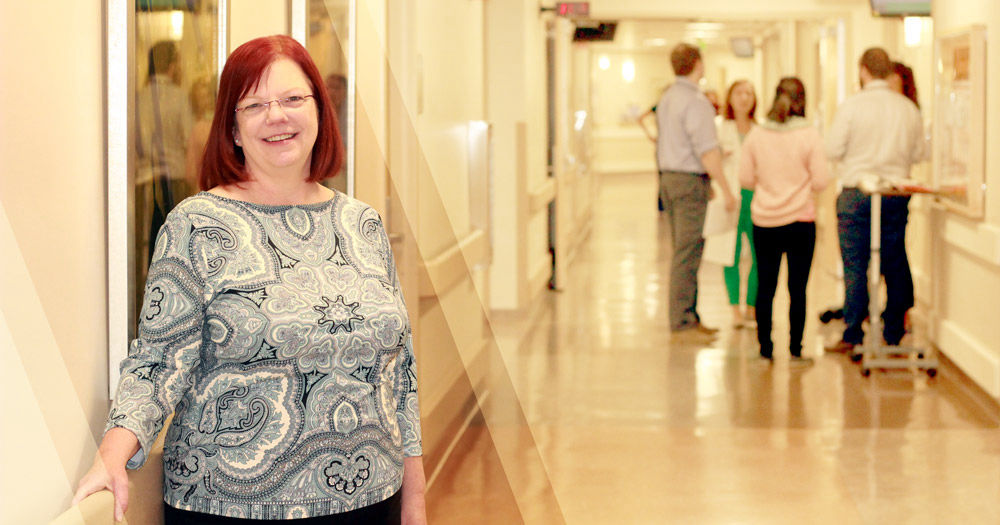usan Clark has led nursing at University of Utah Health for years, first in Newborn Intensive Care, later in Inpatient Medical Rehab and now in Neuro Acute Care. Her experience with different patient populations reinforced the importance of one practice: rounding. Today, Clark finds rounding critical to many missions: improving patient care and safety, recognizing staff, and building an authentic team. Clark’s partner is Dr. Dana DeWitt , the medical director of Utah’s inpatient neurology service. Rounding together is one of their strategies to build an interprofessional team with patient needs at the center.
Leadership and Respect
In this HBR article, Christine Porath's research shows that demonstrating respect is the single most important leadership behavior.
Why rounding demonstrates:
Our Care
Rounding makes the patient feel important. If there is a problem, I can talk to the patient. But most of the time, having the manager stop by gives patients a chance to brag about the nurses and doctors. It gives them a chance to say how good things are with a person who is not just there to provide care.
Our patients are often lonely. I’ll sometimes just sit with patients and spend some time with them. Just being there reflects that our system cares about them.
Our Process
When you follow up on the small things, patients are more likely to trust that you’re coordinating with each other on the big things. It's important to show patients that we have a process for listening, feedback and taking action. For example, patients sometimes will complain about room temperature, and if it doesn’t get fixed, it’s easy to think, “Well, they don't care. They don't care about what's going on with me." When I follow up with them, I show them that we know what is going on with them and we will follow up with them. It tells them that we want to know their feedback and we’ll do something about it.
Our Respect
I want the staff to know that I’m interested in them. I learn about the staff’s work by talking to patients – I learn about what is going well, mostly. It’s so important to staff that I recognize them for what they value about themselves. I recognize them for being compassionate caregivers, which is why many of the staff are here. At first, people were concerned to see me in rooms. They would ask me if everything was ok. Now, they know that I’m there to help.
Here's how I do it:
#1 Timing matters
I usually round three times during the week. I aim for one to four times each week, including my time with Dr. DeWitt. Sometimes I really dread rounding, but I find it’s like exercise – once I get going, it feels good and I’m glad I did it. Each unit I’ve worked on has different patterns, so you have to find out what works for your patients. On Neuro Acute Care, I usually wait until the morning rush is over. I find after lunch is best, so sometime between about 1:00 and 4:00, 4:30 in the afternoon.
Jane Nielsen's Pro Tip:
"When I first started rounding it felt scary. As a manager, you're walking into a situation where you’re going to be asking to know about the problems. What makes it scary is making yourself vulnerable to critique. It’s an uncomfortable place. What makes it easier for me is that I round with a buddy, Deanne Monson, who is our CNC, and has been a floor nurse and educator on CVMU." —Jane Nielsen, RN (Accelerate, Jun. 15, 2017)
#2 Don't just Jump In
I don’t just dive into rounding. I start by finding out if the unit is really frantic. I do a loop around the entire unit. If the unit is really busy, I don’t round so that I can help answer call lights. But most times, I find that the unit is quiet in the afternoon. Usually there are families stuck in the patient rooms, waiting for the patient to return from tests or surgery. I’ll see a family sitting in a patient's room waiting. I offer everyone drinks, cookies, and snacks. I say, "Oh my gosh, have you been waiting long? Can I get you a soft drink, juice or crackers?" Its so horrible to be waiting in the room for three or four hours. Nobody wants to leave to go to the cafeteria because you never know when the physician or patient will return.
I drop off snacks and drinks and I answer call lights along the way. I use that time to scope out the rooms–which rooms have family? I like to round in the rooms with family (as long as it’s not a stressful situation). When the family is there, I like to talk up their team.
#3 Questions I Ask
After I do my initial loop, I grab my pen and paper. I introduce myself and pull up a chair. I'm informal, but I usually ask: How are things going? Are we meeting your expectations? How are your nurses? How are the aides?
I look at their white board, and I ask, “Are you getting your meds when you need them?” Can I get you something now? A lot of times the white board will trigger more questions. I say things like, “I see that they are testing this, are they taking care of it?”
When I first started rounding, I was very scripted. I had four standard questions written down. As I’ve gotten more comfortable and its become part of my habit, I let the moment guide me.
#4 Know When Enough is Enough
Some days, I go into 10 or 15 rooms, or it might be five or six because some patients really need a lot of time. I don’t wake up sleeping patients.
#5. Make Feedback Personal
Most of the time, rounding is really positive. I take the time to share patient stories with staff in a hand-written card. I make my own cards (its therapeutic for me to make cards when I’m having a stressful day). I send the cards to their house. I wrote nine cards today. People really appreciate the personal attention to something that their patients or coworkers value about them. I make time for writing letters every week.
#6 Round with Physicians
I round with Dr. DeWitt on Wednesdays, typically for an hour. I pick the patients that we are going to round on–a mix of patient types and people who have had both good and less desirable experiences. We go through it together so we know about each patient before we go into the room. When we’re in the room, we take turns asking questions to the patient and their family. One of us introduces both of us as, "we're the leadership on the unit and we want to follow-up with you." Dr. DeWitt asks about physician communication. She asks if they know who their doctor is, and we double check our signs on the wall and update the treatment plan.
Dr. DeWitt is very focused on doctor follow up with the patient and how well they understand their plan. She will follow up with the residents and faculty if needed. The residents take her feedback very seriously.
 The Physician's Perspective
The Physician's Perspective
Connecting with the patient is so important
—Dana DeWitt, MD
In 2016, Dr. Dana DeWitt decided to round on patients with Susan Clark, the nurse manager of the Neuro Acute Care unit. We asked her why.
[DeWitt:] At first, my rounding had a lot to do with HCAHPS and quality. But really, I’ve found that having a connection with the patients is so important. When I round with Susan, I get to spend more time with the patient. I make sure they understand what is going on and that they feel comfortable. Being in the hospital isn’t easy.
The most surprising thing I’ve found is that patients are happy with their care. That is really energizing for me! It reminds me that we are doing the right thing.
It’s been powerful to round with Susan. We can address different topics together. I’ll discuss physician communication and the plan for care and discharge. Susan and I address pain issues. Susan asks about how well the nurses respond to the patient and family. Patients see that we’re a team.
Organizing our work together has made a difference. We round together, and we’ve developed interdisciplinary quality meetings where we invite rehab, neurosurgery, occupational therapy, physical therapy and speech therapy. It’s so important that all aspects of the patient’s stay coordinate with each other.
Susan Clark
Teaching the next generation of health care providers happens every morning in 10 minute chunks throughout the hospital. The Surgical Intensive Care Unit reimagined the physician rounds to feature the patient’s nurse, instead of the patient’s physician-student. They found that this simple change created a stronger interprofessional team and advanced nursing practice.
Feedback is often an area that breaks down under the rigors and pressure of clinical activity. Clinician educators Pete Hannon and Kathleen Timme introduce a methodology that can provide insight, inspire goal setting, and help improve clinical performance.
Learners, patients, and teachers are more confident and inspired when we take time to create positive learning environments. Pediatric endocrinologist Kathleen Timme gives practical advice for integrating key aspects of a positive learning environment into your daily interactions.
